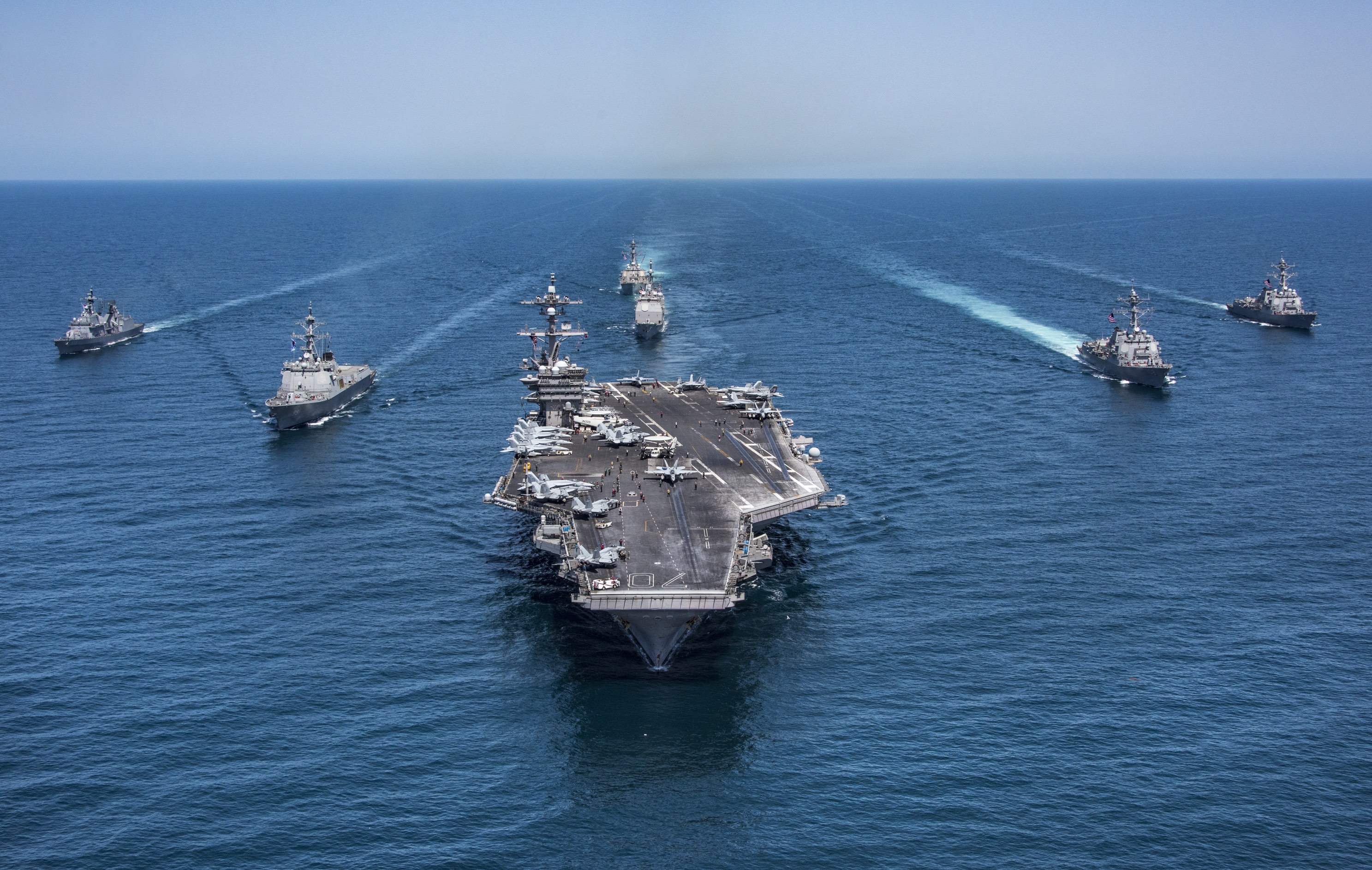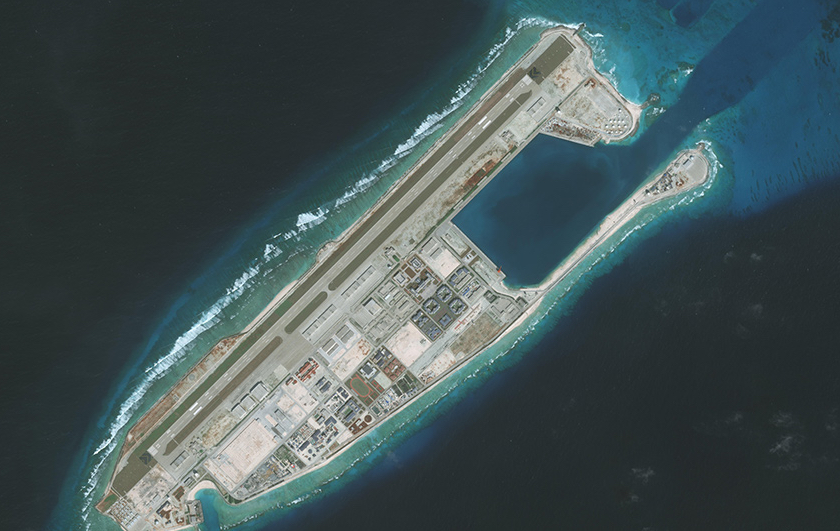
Arts & Culture
China needs to show some cards

The South China Sea has become one of the region’s biggest potential flashpoints – but, hypothetically, what could happen if Australia were dragged into a conflict between rival powers?
Published 1 March 2018
What if maritime forces of the United States and China clash in the South China Sea, and Australia is called on to come to America’s aid? How far would we be willing to go in a skirmish between our strongest military ally and our biggest trading partner?
This is the question posed by Ali Moore, journalist and Vice-Chancellor’s Fellow at the University of Melbourne, as part of a series of panel events exploring some of the big issues we face in the 21st century.

The first in the This Is Not a Drill series, a joint project between Asialink, the University of Melbourne and the Wheeler Centre, looks at a hypothetical crisis in the South China Sea, with expert panellists steering the audience through choppy diplomatic waters to come up with the best strategic response.
We asked Ali to run us through some of the key points of contention of this body of water that is the cause of conflict and tension within the region and throughout the Indo-Pacific.

Arts & Culture
China needs to show some cards
There are six players in the complex web of overlapping territorial claims in the South China Sea . China, Taiwan, the Philippines, Vietnam, Malaysia and Brunei use differing versions of history to back their assertions of sovereignty.
China claims the biggest share, maintaining its right to almost 90 per cent of the South China Sea, occupying all of the Paracel Islands and nine reefs in the Spratley’s, including Fiery Cross Reef and Johnson South Reef.
Beijing bases its claim on the so called “nine dash line” which runs almost 2,000 kilometres from the Chinese mainland to within a few hundred kilometres of the Philippines, Malaysia and Vietnam. While the line only first appeared on official maps in 1948, China maintains that that was confirmation of China’s right, rather than the creation of new claims - arguing sovereignty based on discovery and historical usage.
With their shared history, Taiwan’s broad claims to the area reflect those of China’s.
Historical usage is also used to support the territorial arguments of both Vietnam and the Philippines, with both occupying a number of features - like reefs or largely uninhabited islands - in the South China Sea. Among the more creative efforts, the Philippines’ occupation includes a World War II-vintage transport ship deliberately run aground on Second Thomas Shoal in the late 1990s.

Malaysia and Brunei argue the areas they claim fall within their economic exclusion zones, as defined by the UN Convention on the Laws of the Sea (UNCLOS).
Brunei is the only claimant not to occupy any of the islands.
The United States has no territorial rights, but it has become a significant figure in the disputed territory, conducting freedom of navigation exercises to challenge what it calls “excessive maritime claims” that could limit international access to the area. And US President Donald Trump says he “would love” to have Australia involved in those freedom of navigation operations. To date Australia has given no commitment, however, it does conduct surveillance by air, under Operation Gateway.

Politics & Society
Is Australia becoming the ‘lonely’ country?
The United Kingdom has also waded in - recently saying it would challenge Beijing’s claims by sailing two new aircraft carriers through the disputed waterways on a freedom of navigation patrol.
In their natural state, there’s a number of islands, rocks, and reefs there, but in some cases, what was a rock or a reef has been turned into an island, with China running the most extensive island building program. Some artificial islands now house significant infrastructure, including port facilities and airstrips and there is ongoing speculation China is building fully functioning air and naval bases.
But in addition to this, there’s also the sea’s estimated 11 billion barrels of untapped oil and 190 trillion cubic feet of natural gas – factors likely to play a part in informing the stance of all the claimants.
Recently, an international court case put the spotlight on the territorial disputes.
The Philippines opposes China’s claims to most of the South China Sea, and took its case to international arbitration under UNCLOS.
In 2016, it won the case. The International Court in The Hague ruled China had no legal basis to claim historic rights over the South China Sea, and that it had breached the Philippines’ sovereign rights.

China did not take part in the proceedings, calling the ruling “ill founded” and maintaining it would not be bound by it – further saying that the dispute should be resolved through bilateral negotiations.
But well before the international arbitration in The Hague, other skirmishes in the region hit global headlines, most of them between China and Vietnam.
In 1974, China and Vietnam clashed over the Paracel Islands with fatalities on both sides, and in 1988 China and Vietnamese forces clashed violently on Johnson Reef. More recently the deployment of a Chinese oil rig into Vietnam’s claimed Economic Exclusion Zone in 2014 triggered a major crisis in Sino-Vietnam relations.

Environment
Trump’s political climate
And in 2012, China and the Philippines were in a protracted standoff over Scarborough shoal.
The US Freedom of Navigation operations, when the US Navy sails within 12 nautical miles of disputed features to challenge what it calls China’s “excessive maritime claims”, also regularly provoke controversy. China says the operations violate international and Chinese law, and seriously harm Beijing’s sovereignty and security.
The South China Sea is an arm of the western Pacific Ocean around Southeast Asia. It flows south of China, east and south of Vietnam, west of the Philippines, and north of Borneo.
Its boundaries are the east coast of the Malay Peninsula and the southern limit of the Gulf of Thailand, and to the north, the Taiwan Strait. It covers an area of 3.5 million square kilometres and contains more than 200 mostly uninhabitable small islands, rocks and reefs.
The South China Sea is the shortest way to get from the Pacific to the Indian Ocean, and is host to some of the busiest shipping lanes in the world.
More than half of the globe’s oil tankers, and other raw materials – like coal and iron ore from Australia – pass through the contested waterways, with total annual trade through the area estimated to be worth more than A$4 trillion. The South China Sea also connects East Asia with India, Western Asia, Europe, and Africa.
But it’s not just its importance as a shipping route.

As well as the extensive but unexploited oil and gas reserves mentioned earlier – the South China Sea is also home to valuable fishing grounds. According to research into the region, the annual catch in 2012 was around 10 million tonnes – that’s about 12 per cent of the world’s total catch which was worth around A$28 billion Australian dollars.
So, whichever way you look at the South China Sea, the stakes are high.
China’s claims may be the most extensive, but the sovereign rights of other nations, especially Vietnam and the Philippines, have been fiercely defended in the past. And the US is increasingly prepared to challenge China’s assertiveness, accusing Beijing of militarising the contested waterway.
Experts warn that with the escalation of tensions - a misunderstanding or miscalculation could lead to armed confrontation. And if it comes to that, Australia could well find itself with a significant role to play.
The South China Sea is an issue tackled by of Ali Moore’s This is Not A Drill series in partnership with the University of Melbourne, Asialink, the Wheeler Centre and the ABC. This episode was broadcast on the ABC News Channel at 10pm on Sunday 11 March, 2018.
Banner: Getty Images